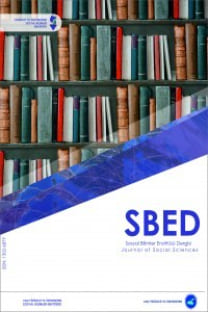Adana’da Göç Odaklı Dirençliliği Arttırmak ve Sosyal Uyum
Bu çalışma 2011 yılında Suriye’de başlayan iç savaş sonrasında Adana iline doğru gelen kitlesel göç hareketi karşısında Adana ilinde görünen kırılganlıklar, fırsatlar ve bu denklemde ortaya çıkan kentsel direncin arttırılması ve sosyal uyum farkındalığının incelemesini içermektedir. Bu açıdan ilk olarak dayanıklı esneklik farkındalığına ilişkin kavramsal sabitlemeler yapmaya çalışacağız. Kavramın tarihsel kökeni ve evrimini anlattıktan sonra konunun ülkemiz ve yerel seviyede belediyelerimizin gündemine alınması hususunu ele alacağız. Sonrasında Adana Büyükşehir Belediyesi’nin göç karşısında kentsel direncin arttırılması ve dayanıklı esnekliğin tesis edilmesi bakış açısıyla hazırlamış olduğu Göç Ana Planı’nından faydalanmayı planlıyoruz.
Bu noktalardan yola çıkarak çalışmayı üç ana başlıkta toparlamak istiyoruz. Giriş bölümünde politik ve tarihsel arka planı Adana ölçeğinde konunun arka planını ortaya koymaya çalışacağız. İlk bölümde kavramsal sabitlemeler yaparak göç karşısında kentsel rezilyans konusunu tartışmaya açacağız. İkinci bölümde Adana ilinde Suriyeli göçünün kent bazında nasıl bir etki ortaya koyduğunu anlamaya çalışacağız. Üçüncü bölümde Adana Büyükşehir Belediyesi tarafından hazırlanan Göç Ana Planınında ortaya konan kırılganlıklar ve fırsatları ele alarak konu edilen sorunlar, hedefler ve çözüm vizyonunu tartışmaya açacağız. Çalışma konuya ilişkin genel bir değerlendirme ile son bulacaktır.
Anahtar Kelimeler:
Suriyeli göçü, sosyal uyum, dayanıklı esneklik, belediye hizmetleri, Adana
Promoting Migration-Oriented Resilience and Social Cohesion in Adana
This study analyses the vulnerabilities, opportunities and urban resilience and social cohesion awareness that emerged in Adana province in the face of the mass migration movement towards Adana province after the civil war that started in Syria in 2011. In this respect, we will first try to make conceptual fixations on resilience awareness. After explaining the historical origin and evolution of the concept, we will address the issue of putting the issue on the agenda of our country and municipalities at the local level. Afterwards, we plan to make use of the Migration Master Plan prepared by Adana Metropolitan Municipality with the perspective of increasing urban resilience against migration and establishing resilience.
Based on these points, we would like to summarize the study under three main headings. In the introduction section, we will try to reveal the political and historical background of the issue at the scale of Adana. In the first section, we will discuss the issue of urban resilience in the face of migration by making conceptual fixations. In the second section, we will try to understand the impact of Syrian migration on the city in Adana. In the third part, we will discuss the vulnerabilities and opportunities set out in the Migration Master Plan prepared by Adana Metropolitan Municipality and discuss the problems, targets and solution vision. The study will conclude with a general evaluation on the subject.
Keywords:
Syrian migration, social cohesion, resilience, municipal services, Adana district,
___
- 5393 No’lu Belediye Kanunu. (2005). https://www.mevzuat.gov.tr/mevzuatmetin/1.5.5393.pdf
- Abbots, E.-J. (2011). It Doesn’t Taste as Good from the Pet Shop”; Guinea Pig Consumption and the Performance of Class and Kinship in Highland Ecuador and New York City. 14(2), 205–224.
- Adana Büyükşehir Belediyesi. (2020). Adana Büyükşehir Belediyesi Göç Ana Planı (2020-2024).
- Adger, W. N. (2000). Social and ecological resilience: Are they related? Progress in Human Geograpy, 24, 347– 364.
- Adger, W. N. (2003). Building Resilience to Promote Sustainability An agenda for coping with globalisation and promoting justice. IHDP Update, 2, 1–3.
- Beck, U. (2019). Risk Toplumu: Başka Bir Modernliğe Doğru. İthaki Yayınları.
- Brigit Obrist, Constanze Pfeiffer, & Henley, B. (2010). Multi-Layered Social Resilience: A New Approach in Mitigation Research. Progress in Development Studies, 10(4), 283–293. https://doi.org/DOI: 10.1177/146499340901000402
- Carpenter, S., Walker, B., Anderies, M. J., & Abel, N. (2001). From Methaphor to Measurement: Resilience of What to What? Ecosystems, 4, 765–781. https://doi.org/10.1007/s10021-001-0045-9
- Erdoğan, M. M. (2015). Türkiye’de Suriyeliler, toplumsal kabul ve uyum: İstanbul. İstanbul Bilgi Üniversitesi Yayınları.
- Folke, C. (2006). Resilience: The emergence of a perspective for social–ecological systems analyses. Global Environmental Change, 16(3), 253–267. https://doi.org/10.1016/j.gloenvcha.2006.04.002
- Göç İdaresi Genel Müdürlüğü. (n.d.). Retrieved 5 July 2020, from http://www.goc.gov.tr/gecicikoruma5638
- International Crisis Group. (2018). Türkiye’deki Suriyeli Mülteciler: Kentsel Gerilimleri Azaltmak (No. 248; Europe and Central Asia). https://www.crisisgroup.org/tr/europe-central-asia/western- europemediterranean/turkey/248-turkeys-syrian-refugees-defusing-metropolitan-tensions
- Kaya, A. (2020). Türkiye’de Suriyeli Göçü ve Belediye Deneyimleri: Kitlesel Göçler, Yerel Yanıtlar (RESLOG Resilience in Local Governance). SKL International.
- Lewis, D. (2020). Rezilyans Kavramı: Ortaya Çıkışı, Evrimi ve Uygulanabilirliği, Bir Kentsel Rezilyans Kılavuzu. SKL International.
- Reslog. (2021). Birlikte Yaşam İçin Elverişli Ortam ve Aktif Hemşehrilik Kavram, Metot ve Pratik (SKL International AB, Vol. 4).
- Sunata, U. (2013). Göçmen İşçinin Sıla Hasreti: Bir Yabancılaşma Hikâyesi. 3(27), 197–218.
- ISSN: 1302-6879
- Başlangıç: 2000
- Yayıncı: Yüzüncü Yıl Üniversitesi Sosyal Bilimler Enstitüsü Müdürlüğü
Sayıdaki Diğer Makaleler
Siirt İlinde Nüfusun ve Yerleşmelerin Yükselti Basamaklarına Göre Dağılışı
Eugénie Grandet Ya da Kentsoylu Bir Ailenin Dramatik Öyküsü
Annelerin Çocukluk Dönemi Örselenme Durumları ile Çocuklarıyla Olan İlişkilerinin İncelenmesi
Aslı BALCI, Zeynep KİSHALI, Fatime AKSU, Zeynep Nur AYDIN KILIÇ
Murat BOZYİĞİT, Abdullah Semih BİREL
Hegemonya ve Peloponnessos Savaşları
Millî Kültür İnşası ve Dil Bilinci Kazandırma Aracı Olarak Kosova Türk Edebiyatında Ninni
Irkçılık Düşüncesinin İlk Formu: Proto-ırkçılık
Haruki Murakami’nin Çin’e Giden Yavaş Gemi Öyküsünde ‘Öteki’ Bağlamında Azınlıkların Temsili
